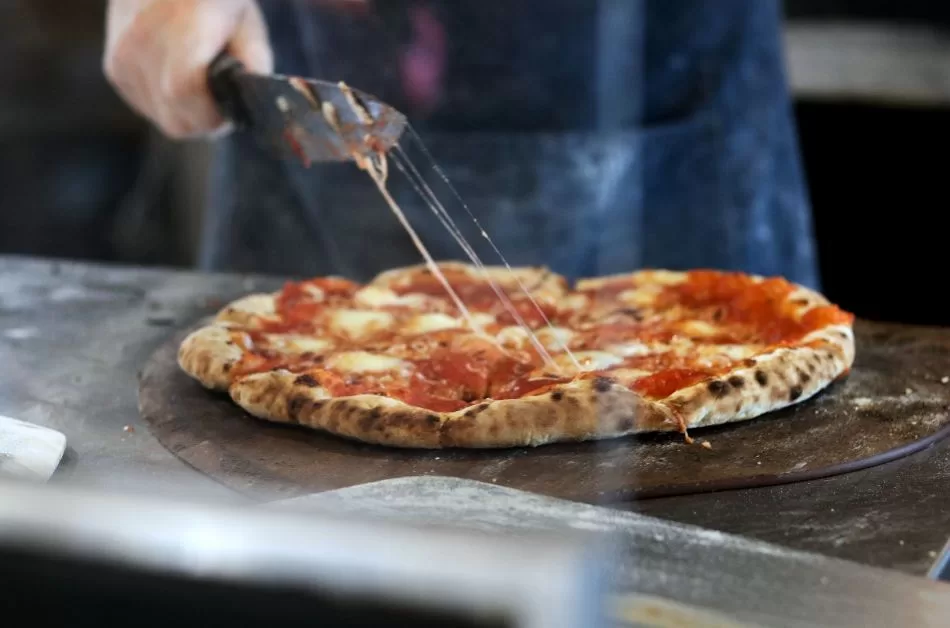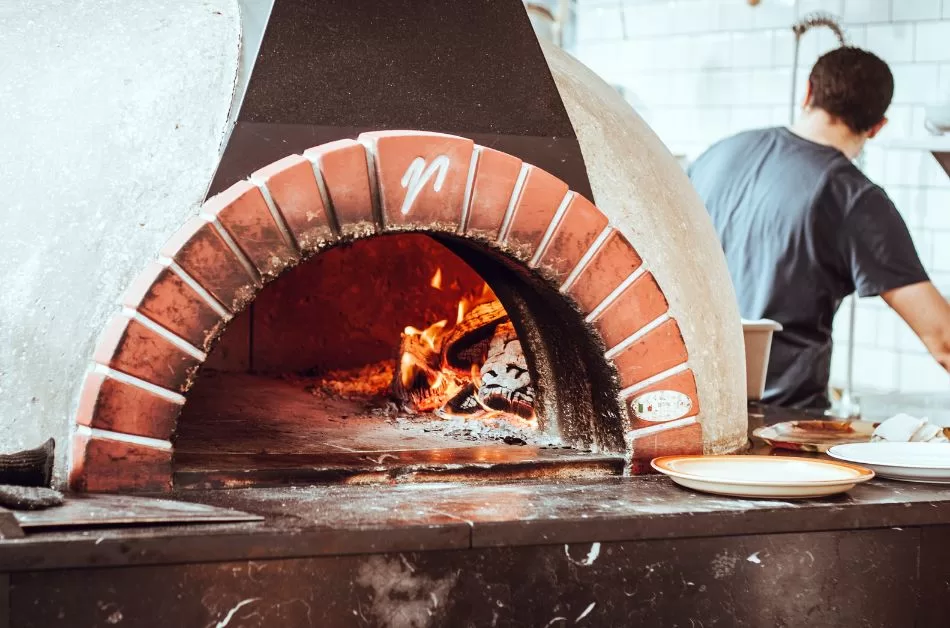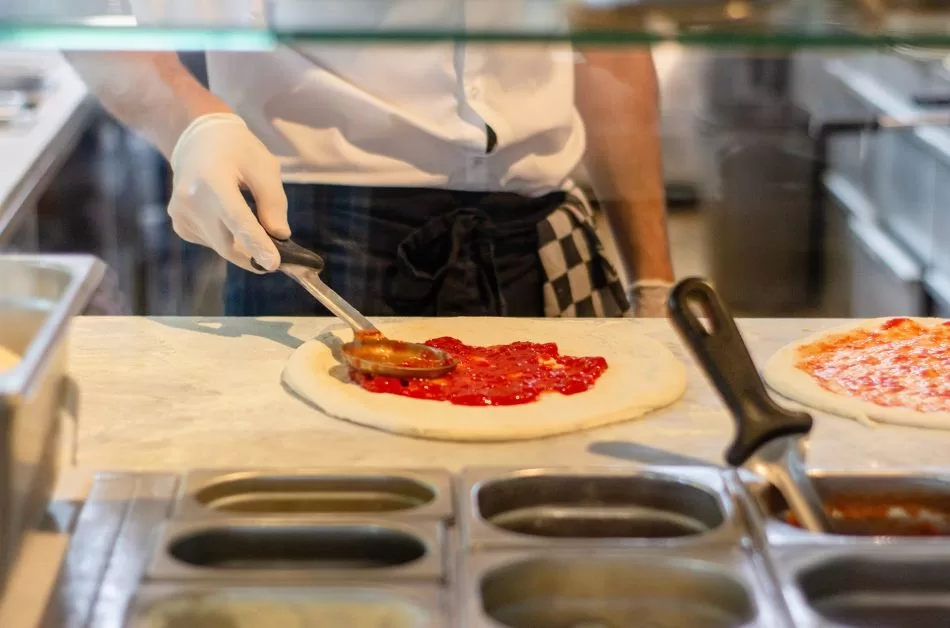Ever daydreamed of crafting the perfect pizza in your backyard? Dive into the essential steps to set up your pizza oven, tailored for everyone from the health-conscious chef to the ambitious business owner.
Imagine the aroma of freshly baked pizza wafting through your backyard, enticing your senses with the promise of mouthwatering delight. With your very own pizza oven, this dream can become a delicious reality.
Whether you’re an enthusiastic home cook, an outdoor entertainer, a health-conscious individual, a small business owner, or a family-focused individual, this guide is designed to equip you with everything you need to know to get your pizza oven up and running in no time!
Table of Contents
Toggle1. Exploring the Types of Pizza Ovens – Matching an Oven to Your Profile
Before we dive into the nitty-gritty of setting up your pizza oven, let’s explore the various types available in the market and find the one that best suits your needs.
Home Cooking Enthusiast: Traditional Wood-Fired Ovens
For the purists who crave that authentic taste of traditional pizza, a wood-fired oven is the way to go. These ovens offer the quintessential smoky flavor and a perfectly charred crust that will transport you to the streets of Naples.
Outdoor Entertainer: Portable or Stationary Outdoor Models
If you love hosting gatherings and want to impress your guests with a piping-hot, freshly baked pizza, consider a portable or stationary outdoor pizza oven. They are versatile and allow you to cook up multiple pizzas to keep the party going.
Health-Conscious Individual: Ovens with Precise Temperature Control
Maintaining precise temperature control is crucial for health-conscious individuals who want to ensure their pizza toppings are cooked to perfection. Look for ovens with advanced temperature regulation features to achieve your desired results.
Small Business Owner: Heavy-Duty Commercial Ovens
For those with ambitions beyond personal enjoyment, venturing into the pizza business requires a heavy-duty commercial oven. These ovens are designed to handle high volumes and deliver consistent results to keep your customers coming back for more.
Family-Focused Individual: Multi-Tiered Ovens for Batch Cooking
If you have a large family or frequently entertain guests, consider a multi-tiered pizza oven. With the ability to cook multiple pizzas simultaneously, you’ll never have to worry about keeping hungry mouths waiting.
2. Picking the Ideal Location – Balancing Aesthetics and Functionality
Now that you’ve chosen the perfect pizza oven for your needs, it’s time to decide where to place it. Balancing aesthetics and functionality is essential to ensure an enjoyable cooking experience.
Indoor Setup Considerations
Indoor pizza ovens are a fantastic option if you want to enjoy pizza all year round, regardless of the weather. Ensure proper ventilation and a heat-resistant floor or base to protect your indoor space.
Outdoor Placement Tips
For outdoor pizza ovens, find a location that complements your backyard design while allowing easy access for cooking. Consider a sheltered spot to protect the oven from the elements.
3. Must-Have Accessories and Tools – Equipping for the Best Results

The right accessories can make a world of difference in the quality of your pizza. Here are some essential tools that every pizza enthusiast should have.
Pizza Stones for Even Heat Distribution
Pizza stones are indispensable for achieving a crisp and evenly cooked crust. Opt for high-quality cordierite stones to ensure excellent heat distribution.
Reliable Oven Thermometers
Precise temperature control is the key to a perfect pizza. Invest in a reliable infrared thermometer to monitor your oven’s temperature accurately.
Pizza Peels and Cutters
A turning peel is essential for rotating and retrieving your pizzas from the oven, while a pizza cutter ensures clean, effortless slices for serving.
4. The Art of Fire Starting – Tailoring Fuel to Your Pizza Goals
The choice of fuel for your pizza oven significantly impacts the flavors and cooking process. Let’s explore the various options and their unique characteristics.
Traditional Hardwoods for Rich Flavors
For those seeking that classic smoky flavor, hardwoods like oak, cherry, and mesquite are ideal choices. Each wood type imparts a distinct taste to your pizzas.
Quick-Starting Charcoal
Charcoal is an efficient and quick-starting fuel option, perfect for busy cooks who want to fire up their pizza oven without delay.
Gas for Consistent Temperature
Gas-powered pizza ovens offer precise temperature control, making them an excellent choice for individuals who prioritize convenience and consistency.
5. Temperature Mastery: Beyond the Basics

Achieving the perfect cooking temperature is an art that goes beyond merely setting your oven to a specific degree. Let’s explore some tips for temperature mastery.
Importance of a Consistent Preheat
Preheating your oven to the right temperature is crucial for even cooking and achieving that coveted crispy crust.
Adjusting Temperature Mid-Cook
Sometimes, you may need to adjust the temperature during the cooking process to ensure your pizza cooks perfectly without burning.
6. The Science of Pizza Dough – Creating the Foundation
The secret to a great pizza lies in its dough. Let’s delve into the science of pizza dough and explore various options to suit your preferences.
Classic Neapolitan Dough
The Neapolitan pizza dough, made with high-protein flour, water, salt, and yeast, is the foundation for a traditional pizza.
Whole Grain and Gluten-Free Variations
For those seeking healthier alternatives, whole grain, and gluten-free dough options offer a delicious twist without compromising on taste.
DON’T MISS: The comprehensive review of the Infood Propane Gas Pizza Oven
7. Topping Selection: A World of Choices – Picking and Prepping Ingredients
Now that you’ve mastered the dough, let’s explore the exciting world of pizza toppings and how to pick and prep the best ingredients.
Local vs. Store-Bought
Support local produce whenever possible, as fresh, locally sourced ingredients can elevate the flavor of your pizza.
Fusion and International Inspirations
Experiment with unique and diverse toppings inspired by various cuisines to create a tantalizing fusion of flavors.
8. Sauce It Up! – From Traditional Tomato to Pesto Perfection

The sauce is the heart of any pizza. Let’s learn how to craft delicious homemade sauces and explore some non-traditional bases.
Crafting Homemade Sauces
Prepare traditional tomato sauces, pesto, alfredo, or even BBQ-based sauces to add your own personal touch to each pizza.
Exploring Non-Traditional Bases
Think outside the box with creative and unique bases like creamy garlic sauce, tangy mango chutney, or smoky chipotle.
9. Achieving the Perfect Bake – Guidelines for Crisp and Chewy Crusts
The key to achieving that perfect pizza crust lies in understanding baking techniques. Let’s explore some guidelines for a pizza that’s crisp on the outside and chewy on the inside.
Oven Rotation Techniques
Properly rotating your pizza during baking ensures even cooking and consistent crust texture.
Spotting the Signs of a Ready Pizza
Knowing when your pizza is perfectly baked requires keen observation. Keep an eye out for visual cues to get the timing just right.
10. Beyond Pizzas: Oven’s Versatility – Expanding the Menu
Your pizza oven is not limited to pizza alone. Unlock its versatility by exploring various dishes that can be cooked to perfection in your wood-fired wonder.
Bread and Calzones
Experiment with baking fresh bread or preparing savory calzones to delight your family and friends.
Slow-Roasted Meats and Vegetables
Infuse a smoky flavor into your favorite meats and vegetables with slow-roasting, elevating your dishes to new heights.
11. Regular Maintenance is Key – Prolonging Your Oven’s Efficiency
To ensure your pizza oven stays in top shape and continues to serve you well, regular maintenance is essential. Here are some practical tips.
Cleaning Post Each Session
Cleaning your oven after each use prevents the buildup of residue and maintains optimal performance.
Monthly Deep Cleans
Perform a thorough deep clean once a month to remove stubborn residues and maintain your oven’s efficiency.
READ ALSO: Our recent review on Razorri Comodo Gas Oven
12. Handling Oven Mishaps – Troubleshooting Common Issues
Even the most experienced pizza makers encounter mishaps. Here are some common issues and their solutions.
Smoke Excessiveness
Excessive smoke can be caused by various factors, from improper fuel to incorrect airflow. Discover how to troubleshoot and resolve this issue.
Uneven Cooking Solutions
If you notice uneven cooking, explore possible reasons and how to adjust your oven to achieve even results.
13. Enhancing Flavors with Wood Choices – Selecting the Best Wood for Flavor Profiles
The choice of wood can significantly influence the flavors of your pizza. Learn which woods to use for different taste profiles.
Oak and Cherry for Subtle Smokiness
Oak and cherry woods offer a subtle smokiness that complements a wide range of pizza toppings.
Mesquite for Intense Flavors
For those who love bold and intense flavors, mesquite wood is an excellent choice that infuses your pizza with a robust taste.
14. Safety First: Operating Precautions – Ensuring a Risk-Free Cooking Environment
Safety is paramount when operating a pizza oven. Let’s explore some essential precautions to keep you and your loved ones safe.
Safe Ignition Methods
Ensure you follow safe ignition practices to prevent accidents and mishaps.
Protective Gear Recommendations
Investing in appropriate protective gear will provide an added layer of safety during the pizza-making process.
15. Building a Pizza Community – Sharing and Learning with Others

One of the joys of pizza-making is sharing the experience with others. Let’s explore how you can build a pizza community and learn from fellow enthusiasts.
Joining Local Pizza-Making Groups
Connect with like-minded individuals in your area by joining local pizza-making groups or clubs.
Hosting Pizza Potlucks and Challenges
Organize pizza potlucks and challenges to bring people together and celebrate the art of pizza making.
Final Thoughts
Congratulations! With your pizza oven now set up and ready to go, you’ve unlocked a universe of flavors and experiences right at your fingertips. From the creation of raw dough to the delicious transformation into a gourmet slice, you hold the power to craft pizza perfection in your own backyard.
But wait, there’s more excitement to uncover! If you’re eager to take your pizza-making journey to the next level, I highly recommend checking out the review of the Razorri Comodo Gas Pizza Oven.
This incredible gas-powered oven has garnered praise from pizza enthusiasts, and you won’t want to miss the opportunity to explore its features and benefits. Click here to read the full review and discover how it can elevate your pizza-making game.
So, what are you waiting for?
Gather your favorite ingredients, roll out that dough, and get ready to create culinary masterpieces that will delight your taste buds and those of your loved ones. Whether you prefer traditional wood-fired flavors or the convenience of gas-powered precision, the journey to pizza perfection begins now.
Happy baking, and may your homemade pizzas bring joy, satisfaction, and endless moments of delicious delight!
Frequently Asked Questions
The ideal temperature range for cooking pizzas is between 700°F to 800°F (371°C to 427°C). This high heat ensures a crispy crust and even cooking.
A well-insulated wood-fired oven can retain heat for several hours after the fire has been extinguished, making it perfect for cooking multiple pizzas in one firing.
Absolutely! A high-quality pizza stone, preferably made of cordierite, helps distribute heat evenly, resulting in a better crust and overall baking experience.
Yes, you can cook a frozen pizza in a wood-fired oven, but it requires some adjustments to the cooking time and temperature. Keep a close eye on it to prevent burning.
Using a reliable infrared thermometer to monitor the oven’s temperature and rotating the pizza regularly during cooking will help ensure consistent heat distribution and even cooking.

Ethan Davis, a culinary arts graduate with a deep passion for pizza, is an esteemed author in the field. With a wealth of professional experience in diverse pizza restaurants, Ethan has honed his skills and expertise in the art of pizza making. His mission is to share his extensive knowledge with a wider audience, captivating them through engaging articles that showcase his profound understanding and unwavering enthusiasm for the subject. Through his writing, Ethan aims to inspire pizza enthusiasts worldwide, fostering a greater appreciation for the craft and encouraging others to explore the delicious world of pizza.

